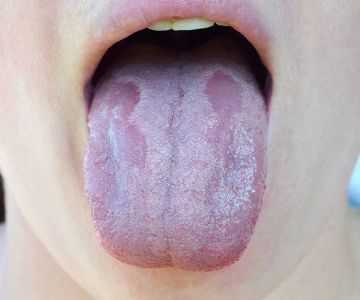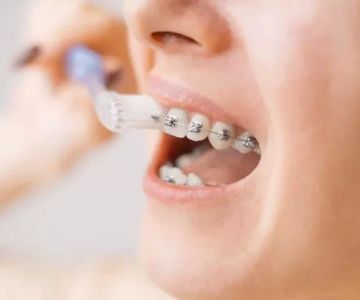
- Importance-of-Dental-Care-for-Children
- Daily-Dental-Care-Steps-for-Children
- Choosing-the-Right-Products-for-Kids
- Professional-Dental-Visits-for-Children
- Common-Challenges-and-Solutions-in-Children’s-Dental-Care
1. Why Establishing a Good Dental Care Routine Early Matters
A strong dental care routine in childhood lays the foundation for lifelong oral health. Children’s teeth are more vulnerable to decay and cavities because their enamel is thinner and less mineralized than adults’. Establishing healthy habits early can prevent many common problems such as early childhood caries and gum inflammation.
Beyond health, teaching children a consistent dental routine builds their confidence and independence. It empowers them to take responsibility for their own well-being, reducing anxiety around dentists and medical visits in the future. This is why understanding the best dental care routine for children is crucial for parents and caregivers.
A real-life example highlights this well: a mother in Chicago shared how her son developed cavities by age 5 due to inconsistent brushing habits. After she implemented a structured routine combined with pediatric dental visits, his dental health dramatically improved, sparing him painful treatments later on.
2. Key Steps in the Daily Dental Care Routine for Children
2.1 Brushing Techniques and Frequency
The cornerstone of children dental care is proper brushing. It’s recommended that children brush twice daily for at least two minutes each time. Using a soft-bristled toothbrush designed for children protects their sensitive gums and teeth from damage. Parents should assist young kids until they master the skill themselves, usually by age 7 or 8.
An engaging way to encourage brushing is turning it into a game or using timers and songs. For example, one family shared how a brushing chart with stickers helped their kids stay motivated and consistent, leading to noticeably cleaner teeth and fresher breath.
2.2 Flossing and Its Role
Although flossing can be challenging for young children, it becomes essential once the child’s teeth start to touch. Daily flossing helps remove plaque and food particles from between teeth where brushing can’t reach. Introducing floss gently with colorful floss picks designed for kids can make the experience more enjoyable.
2.3 Diet and Its Impact on Oral Health
Nutrition plays a critical role in children’s oral health. Limiting sugary snacks and drinks reduces the risk of cavities significantly. Instead, providing foods rich in calcium, vitamin D, and phosphorus strengthens tooth enamel and promotes healthy gums. A pediatric dentist once emphasized to a family the impact of juice boxes on their child’s dental decay, which led them to switch to water and milk as primary drinks.
3. Selecting Effective Dental Products Tailored for Kids
Choosing the right toothpaste, toothbrush, and mouthwash adapted to children’s needs is vital. Fluoride toothpaste in small amounts helps prevent tooth decay but should be supervised to avoid swallowing. Many brands specifically formulate products with child-friendly flavors and lower fluoride concentration.
For parents unsure where to start, Dentistry Toothtruth offers reliable guidance on the best dental care products for children, ensuring safety and efficacy. Their expert recommendations simplify the selection process, helping families find the most suitable options.
4. The Importance of Regular Pediatric Dental Visits
Even with an impeccable at-home routine, professional dental checkups are indispensable. The American Academy of Pediatric Dentistry recommends the first visit by the child's first birthday. These visits allow early detection of potential problems, preventive treatments such as fluoride varnishes, and professional cleaning.
One parent recounted how early dental visits helped identify a bite issue in their child, which was corrected before it caused long-term complications. Such interventions underline the role of regular dental care visits within the broader best dental care routine for children.
5. Addressing Challenges in Maintaining Children’s Oral Hygiene
5.1 Overcoming Resistance and Fear
Many children resist brushing or visiting the dentist due to fear or discomfort. Creating a positive environment, using playful language, and leading by example can ease these anxieties. Pediatric dentists often use gentle techniques and child-friendly equipment to make visits less intimidating.
5.2 Managing Special Needs and Conditions
Children with special healthcare needs may require tailored dental routines. Consulting with specialized dental professionals ensures their unique challenges are addressed properly, incorporating adaptive tools or schedules.
In all cases, personalized advice and supportive products from providers like Dentistry Toothtruth can be invaluable resources for parents navigating these challenges.







 Westgate Dental Arts
Westgate Dental Arts Coventry Family Dental
Coventry Family Dental Familia Dental
Familia Dental Dr. Daniel S. Fife, DDS
Dr. Daniel S. Fife, DDS Dentistry At Suburban Square: Michael I. Wollock, DMD
Dentistry At Suburban Square: Michael I. Wollock, DMD Comfort Care Dental
Comfort Care Dental The Importance of Oral Health Education During Pregnancy for a Healthy Pregnancy
The Importance of Oral Health Education During Pregnancy for a Healthy Pregnancy Why Skipping Dental Checkups Can Lead to Bigger Oral Health Problems
Why Skipping Dental Checkups Can Lead to Bigger Oral Health Problems Best Tips for Brushing Your Teeth Properly for Healthy Gums: Essential Techniques for Oral Health
Best Tips for Brushing Your Teeth Properly for Healthy Gums: Essential Techniques for Oral Health Advantages of Porcelain Dental Restorations
Advantages of Porcelain Dental Restorations How Can Diabetes Cause Tooth and Gum Problems? Preventing and Managing Oral Health Issues
How Can Diabetes Cause Tooth and Gum Problems? Preventing and Managing Oral Health Issues Healthy Habits for Promoting Good Oral Health and Hygiene: Tips for a Healthy Smile
Healthy Habits for Promoting Good Oral Health and Hygiene: Tips for a Healthy Smile